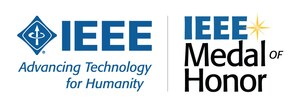NEW YORK, Oct. 24, 2012 /PRNewswire/ -- Distinguished members of IEEE, a large, global professional organization dedicated to advancing technology for humanity, have found that advancements in small robots, ranging from nanorobots to shoebox-sized robots, hold promise for delivering innovative and life-altering future applications. With a wide range of capabilities including, minimizing the potential of food safety incidences, monitoring health and administering medicine from inside the body and providing vital information for search and rescue teams, small robots will have a large impact on the longevity and wellbeing of our society.
(Logo: http://photos.prnewswire.com/prnh/20120306/NY65270LOGO )
"The relationship between robot size and human acceptance is an area of robotics that is constantly being examined. This applies to the full range of robot sizes, from ingestible robots to health-monitoring caregiving social companions," said Dr. Maja Mataric, IEEE Fellow and Founding Director of the University of Southern California's Center for Robotics and Embedded Systems. "It is an extremely exciting time in the development of smaller robot technologies that will be used for a variety of applications that can enhance our lives in the near future."
Maintaining Food Safety With Monitoring Robots
NSF International, leading global provider of public health and safety risk management solutions, estimates that 325,000 people are hospitalized each year from food-borne illness. To help minimize the number of food safety incidences, miniature robots are being designed to specifically monitor the operating and ambient conditions throughout the entire food production process. "Whether it is analyzing the levels of mercury in fish, the humidity during the aging process of cheese or the acidity levels during the fermentation of wine, these miniature robots can provide the in-depth insight needed for not only improving the quality of taste, but also minimizing the likelihood of food-borne illnesses," said Dr. Paul G. Ranky, IEEE Member and a professor in the Department of Mechanical and Industrial Engineering at the New Jersey Institute of Technology (NJIT).
Increasing Lifespan With Robot Injections
Microscopic in size, nanorobots are being developed that can be injected into our bodies for use as mini-monitors of disease and instability in a human's immune system. They will have the ability, through artificial intelligence systems, to treat different diseases or ailments automatically. Using multiple nanorobots, or swarms, these robots will be able to deliver specific tasks in the human body.
"This noninvasive form of health monitoring and maintenance has promise for increasing life expectancy by 2030," said Antonio Espingardeiro, IEEE member and independent robotics expert. "These robots will soon have the ability to detect diseases, unclog arteries or even provide injections of medications like insulin. Collectively, these capabilities will help identify and treat conditions in their infancy and allow our bodies to properly function for longer periods of time."
Helping Disaster Victims Faster With Snakelike Robots
Search and rescue missions are critically important for ensuring the safety of victims following building collapses, natural disasters and nuclear events. Using small robots, which are no larger than a shoebox and have snakelike movement capabilities, in these post-disaster situations can be extremely advantageous for serving multiple critical functions, such as burrowing into the rubble to perform initial structural scans of a disaster area, monitoring for any human life and providing aerial assessments.
"Often times, search and rescue missions can be just as harmful for first responders than those who experienced the disaster firsthand," explained Dr. Robin Murphy, IEEE Fellow, director at the Center for Emergency Informatics and one of Fast Company's Most Influential Women in Technology. "By 2030, the use of small, ground-based robots, unmanned aerial vehicles (AUVs) or drones, and underwater remotely operated vehicles (ROVs) in search and rescue operations will reduce the number of lives lost by 50 percent and expedite economic recovery to be up to twice as fast."
Taking Robotics to the Next Level with Morphogenesis
Size will continue to be an area of creativity for robot inventors. Engineers are currently working on ways a singular robot could perform morphogenesis, or, shape-shift, to different shapes to achieve a certain objective. "There are technical aspects that still need to be worked out, but theoretically, these morphogenic robots could roll into a ball, form a temporary bridge, collapse to become smaller or elongate shape to form barriers," said Espingardeiro. "The future of this technology has amazing real-world applications for use in construction, manufacturing, traffic management, and search and rescue."
Additional Resources:
IEEE Spectrum: http://spectrum.ieee.org/robotics
IEEE International Conference on Robotics and Automation (ICRA) 2013: http://www.ieee-ras.org/event/icra-2013-ieee-international-conference-on-robotics-and-automation.html
About IEEE
IEEE is a large, global professional organization dedicated to advancing technology for the benefit of humanity. Through its highly cited publications, conferences, technology standards, and professional and educational activities, IEEE is the trusted voice on a wide variety of areas ranging from aerospace systems, computers and telecommunications to biomedical engineering, electric power and consumer electronics. Learn more at http://www.ieee.org.
Media Contacts:
Andrew Corcione
Finn Partners for IEEE
212-593-5844
[email protected]
Fran Tardo
IEEE
212-419-7750
f.tardo@ieee.org
SOURCE IEEE
WANT YOUR COMPANY'S NEWS FEATURED ON PRNEWSWIRE.COM?
Newsrooms &
Influencers
Digital Media
Outlets
Journalists
Opted In






Share this article